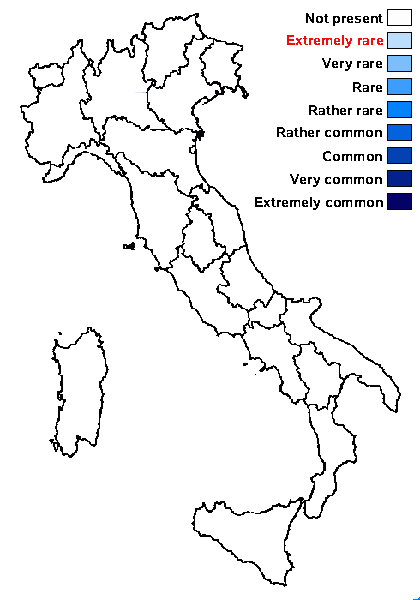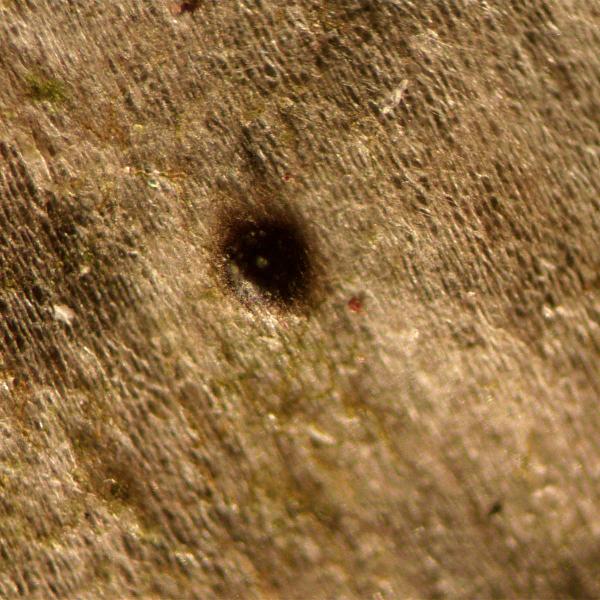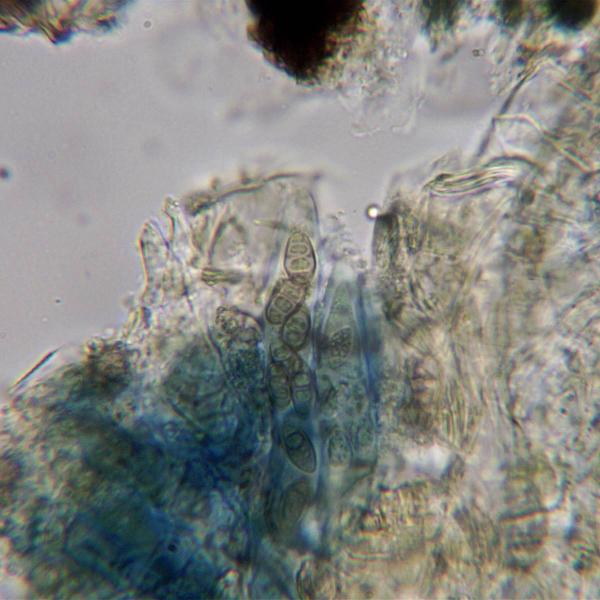Eopyrenula avellanae Coppins
Lichenologist, 24: 356, 1992
Synonyms:
Distribution:
Description: Thallus crustose, endosubstratic and poorly evident, hardly discolouring the bark, loosely associated with a few trentepohlioid algae. Perithecia black, 0.2-0.3 x 0.15-0.22 mm, broadly ellipsoid, with a distinct depression near the ostiole, more or less hemispherical in section. Involucrellum outwardly spreading; true exciple indistinct; hamathecium of numerous, mostly simple, persistent paraphysoids; hymenial gel hemiamyloid. Asci (2-)8-spored, subcylindrical, without apical ring-structure and without a distinct ocular chamber, the wall K/I+ blue, especially in lower part, 55-60 x 10 µm. Ascospores (1-)3-septate, pale brown, ellipsoid, 9.5-16 x (5-)6-7 µm, with lenticular lumina, the septa pale or the mid-septum turning dark in older spores. Pycnidia black, producing either 1) 3-septate, pale brown macroconidia measuring 9.5-13 x (4-)4.5-6 µm, with rounded locules and pale septa, 2) bacilliform, hyaline microconidia measuring 2.8-4 x 0.7 µm. Photobiont trentepohlioid, but usually scarce. Spot tests: thallus K-, C-, KC-, P-, UV-. Chemistry: without lichen substances.Note: widespread in the British isles, this species growing on smooth bark is apparently much rarer in continental Europe, with a few scattered records, including Switzerland. To be looked for in Italy.
Growth form: Crustose
Substrata: bark
Photobiont: Trentepohlia
Reproductive strategy: mainly sexual
Most common in areas with a humid-warm climate (e.g. most of Tyrrenian Italy)

Predictive model
Growth form: Crustose
Substrata: bark
Photobiont: Trentepohlia
Reproductive strategy: mainly sexual
Most common in areas with a humid-warm climate (e.g. most of Tyrrenian Italy)

Predictive model



